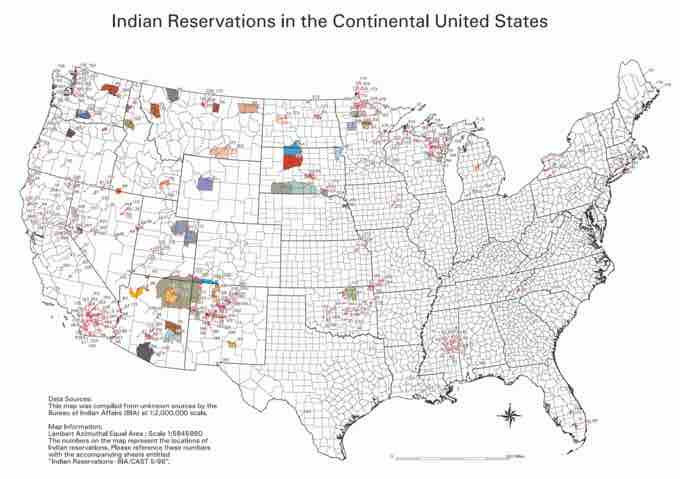Introduction
Native Americans are people of indigenous American descent, including indigenous peoples within the boundaries of the present-day United States. Native Americans are comprised of numerous, distinct ethnic groups, many of which continue as intact cultural and political entities. According to US Census data, 1.37% of Americans identify themselves as Native American.
European Settlement and American Expansion
Prior to the 15th century, groups that were indigenous to the Americas lived in isolation from the rest of the world. Indigenous societies ranged widely in terms of geographic location, culture, and social structure, with distinct languages and governing systems. When Europeans colonized the Americas, massive numbers of Native Americans were killed through warfare and the spread of disease. Of those who survived, most were either forced off the land they inhabited or forced to convert to Christianity and work under Europeans. During the initial phases of American colonization, European policy generally forced Native Americans westward, where there was a low density of European settlement.
By the 1800s, however, the newly formed United States of America sought to expand its territory and strengthen its hold on the western portion of the continent. As settlers moved west, new conflicts with Native American populations ensued. In an attempt to confine Native Americans to limited territory, thus clearing the way for westward expansion, the U.S. government created a system of Indian reservations. Reservations were intended to reduce conflict between settlers and Indians without curbing American expansion, but they were controversial and largely unsuccessful from the start. On the one hand, settlers objected to large portions of land being given to indigenous populations, and on the other, Native Americans objected to having their movement restricted and their territory reduced. Moreover, Native Americans rejected the limited autonomy they were granted through the reservation system, as the reservations were administered by U.S. bureaucrats rather than tribal leaders.
Native Americans in the Modern United States
Today, there are still 310 Indian reservations in the U.S., but they remain controversial. Reservations have alcoholism, domestic abuse, sexual violence, poverty, and illiteracy rates that are among the highest in the country. Partly because of the reservation system, civil rights protections have often involved complex legal issues. Native Americans have allegedly been granted the right to self-determination, which has sometimes limited support on both sides for U.S. governmental protections.
Nonetheless, by 1968 the U.S. Congress passed the Indian Civil Rights Act, which gave tribal members protections from both the U.S. Government and from rights infringements by tribal leaders. Soon after, affirmative action policies began being applied to Native Americans, in an attempt to provide equal opportunity in employment, housing, and education. Despite these efforts, Native Americans still tend to have lower socioeconomic status and greater exposure to crime and abuse than other American groups.

Map of Indian Reservations in the U.S.
Beginning in the 19th century, the U.S. government attempted to reduce conflict and pave the way for territorial expansion by confining Native Americans to reservations, granting them a degree of sovereignty in exchange.